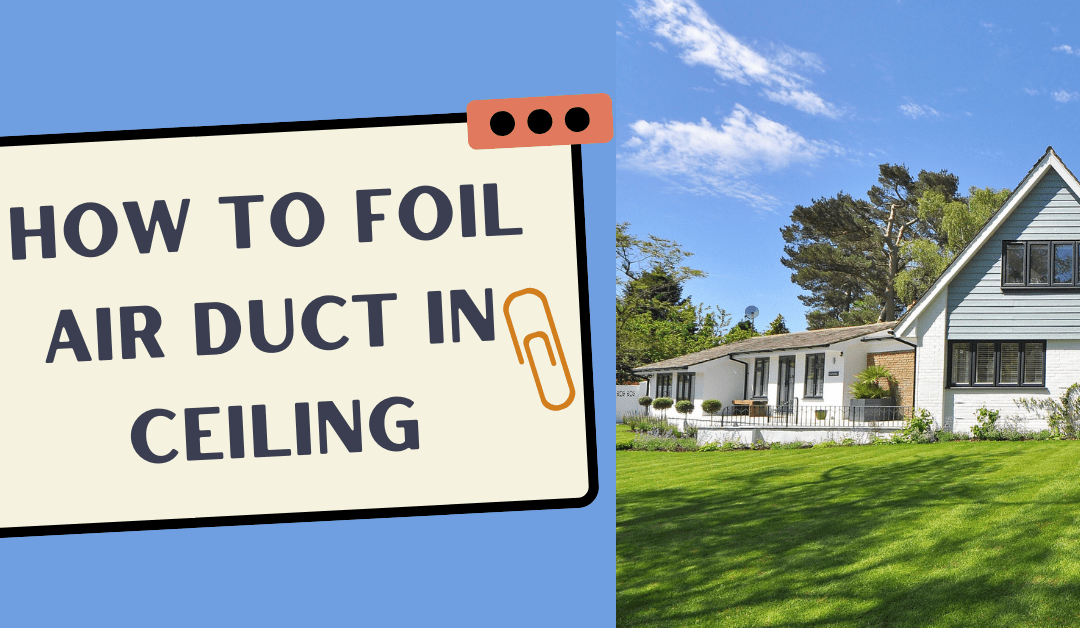Aluminum foil tape combines the weather-resistant sealing capability of adhesive tape with the adaptability of aluminum to create an exceedingly flexible product. There are various air duct cleaning equipment as well, which aid in the longevity of the air duct by keeping it clean and insulated for a long.
As a result of its many applications, foil tape is used in a broad range of businesses, including manufacturing and construction. It is a tape with a broad variety of uses due to its resistance to moisture and chemicals, thermal conductivity, flame resistance, heat and light reflection, and weatherability.
Your air ducts often leak between 20 and 30 percent of the conditioned or heated air that passes through them. Seal and insulate your air duct joints if at all feasible to increase their efficiency. Forced-air furnaces, central air conditioners, and heat pumps all waste a lot of energy via their ductwork. You may significantly increase the efficiency of your heating and cooling system by sealing and insulating ducts.
Importance of Sealing and Insulating Air Ducts in Ceiling
You may save a lot of money on power costs by sealing and insulating air ducts that go through unconditioned areas like the attic.
Sealing your air ducts helps prevent dust, pollen, and other possible allergens from entering the system via leaky return ducts, which can degrade your indoor air quality and could cause breathing issues for people with asthma or allergies.
It’s possible that carbon monoxide, which may be lethal, is getting into the system via ducts that aren’t properly sealed. Take a look at some of the important tips for sealing and insulating your HVAC system:
- Check your air ducts for any loose or broken couplings, gaps, or insulation. Use the right clamps for flexible ducts and screws for stiff ducts to secure loose connections.
- Mastic or foil tape may be used to seal any minor holes or seams in the ductwork. Duct tape should not be used.
- A mixture of mastic over fiberglass mesh or heat-resistant tapes, such as butyl or metal-foil tape, may be used to seal bigger holes.
- In unconditioned areas, use duct insulation or fiberglass batts with an R-6 value or higher to shield each air duct.
- Install a vapor barrier on the exterior of cooling ducts and use duct tape to support and seal the joints.
- Re-stretch any sections of flexible tubing that have been compressed.
In the attic, crawlspace, unheated basement, or garage, the first place to start is closing the ducts. There are a few sealants to choose from, each with its own set of advantages and disadvantages.
What is Aluminum Foil Tape?
Commercial manufacture of aluminum foil began in the United States in 1913, more than a decade after its invention in 1888. To protect packages, electrical capacitors and insulation during World War II because of its insulating characteristics and appealing look were frequently utilized.
After World War II, it was made commercially accessible. Because the foil tapes have a particular metal-foil backing, they are more pliable as well as conductive and tougher. Anodized aluminum foil tape is one kind of foil tape carrier.
Other types of metal foil tape carriers include aluminum and aluminum with glass, lead, and copper with tin coating and steel. This aluminum foil tape is commonly utilized in building and construction, though.
Is duct sealing a do-it-yourself job?
Now that you’ve learned about the benefits and downsides of mastic and tape, you may be thinking about whether this is a task you can handle on your own. Despite the fact that anybody may seal their own ductwork at any moment, there are a few drawbacks to doing so.
Materials, time, and complexity are the minor issues. Mastic and/or high-quality tape (ideally mastic tape, which isn’t so simple to get) are the first things you’ll need. A crawlspace or attic with ducting will need a significant amount of time and effort on your part.
And if you’ve had insulation wrapped over hard pipe ducts, you’ll have to remove the insulation, fix any leaks, and then reapply the insulation. That’s a lot of work! The quality of the work itself poses a far greater challenge than any of these difficulties.
Advantages of Foil Tape
When it comes to ensuring your air ducts are correctly sealed, Aluminum Foil Tape is the most convenient and least messy option. It also implies that the tape will wear out more quickly since it is constantly exposed to dirt and grease.
Using mastic tape or butyl tape can assist in enhancing the seal and keeping it in place much longer if you decide to use it. With Mastic sealant, you are getting a far more efficient method of sealing your air ducts, but it is also considerably messier.
A normal paintbrush is the best tool for spreading this sticky stuff. You may also need fiberglass mesh tape, so check to see whether the tape’s color matches the sealant. Wrap the ducts with insulation once they’ve been sealed to prevent them from becoming too hot or too cold during the summer or winter.
After that, double-check and seal any additional ducts in the heated or cooled portion of the home that you can reach.
Final Thoughts
A professional HVAC firm can seal and clean your ducts for you if you’re not comfortable doing it yourself or if you’re concerned about the ducts you can’t see. If additional ducting repairs are needed first, then duct sealing may be an option. Undersized, damaged, or improperly built ductwork may be found in many Atlanta-area residences.
First, you need to assess whether your current ducts are worth sealing before you seal them. Otherwise, whether you use tape or mastic is a moot point. If you’re thinking about duct sealing for your home’s energy efficiency and air quality, call the HVAC firm! The experts will analyze your ducts to decide the best course of action, whether it’s foil tape, mastic, or another.
